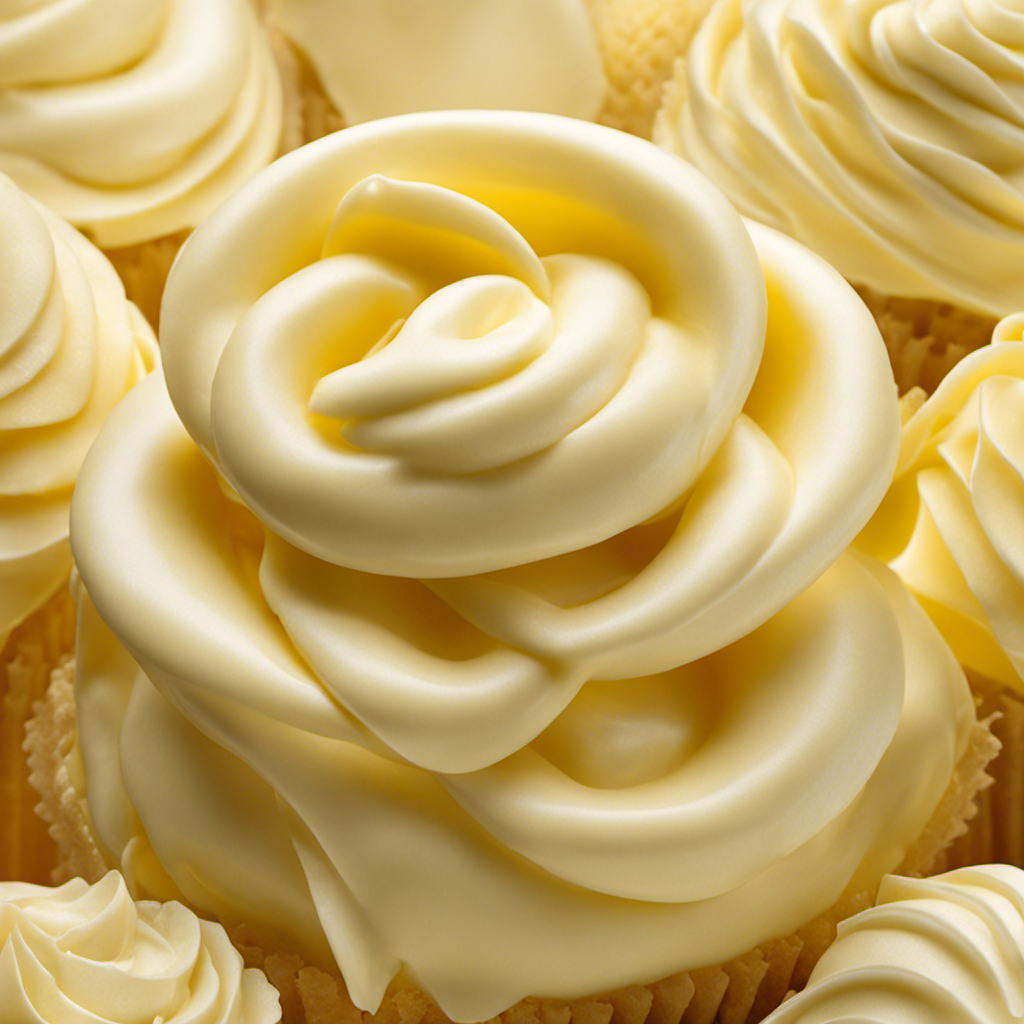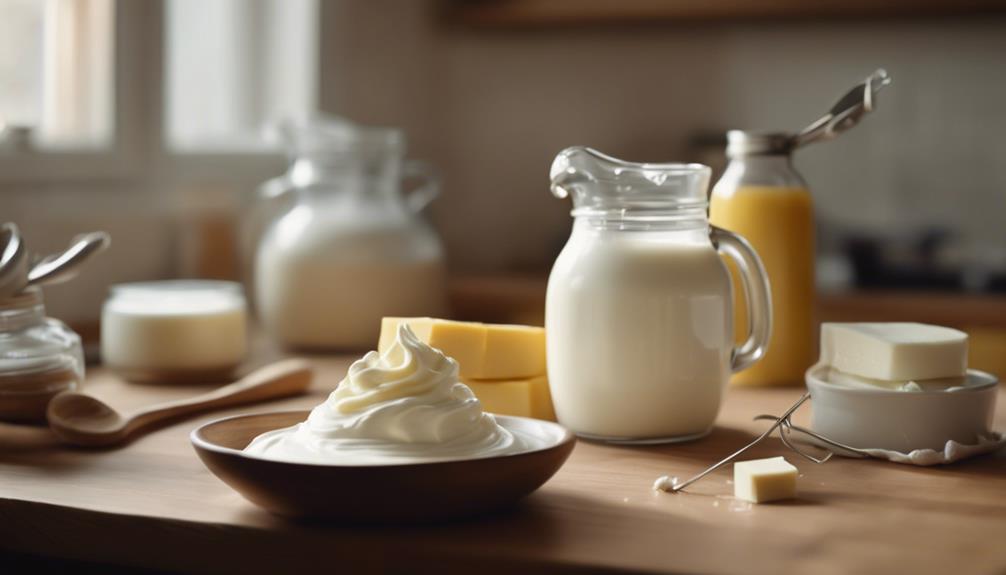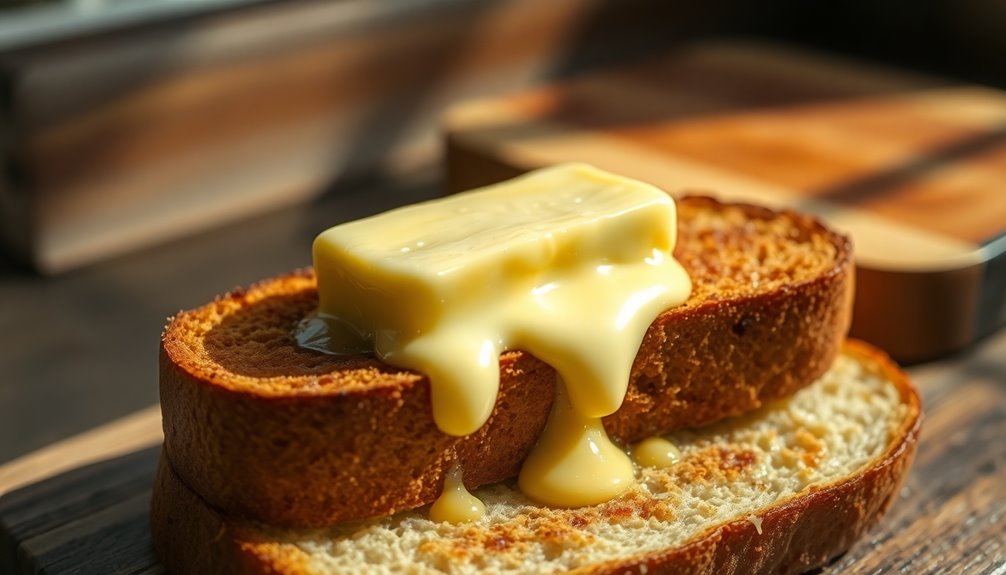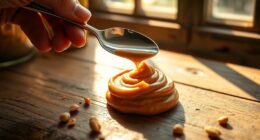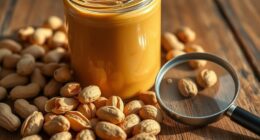I never thought I would be on a quest to find goat butter, but here I am, exploring the vast world of Breath of the Wild.
It’s amazing how a simple ingredient can become a valuable commodity in this game, and if you’re like me, you’re probably wondering how to get your hands on some.
Well, fear not, because I’ve done the legwork for you. In this article, I’ll guide you through the different methods of obtaining goat butter, from finding the vendor to completing side quests.
So let’s dive in and uncover the secrets of goat butter in BotW!
Key Takeaways
- Head to the Hateno Village market and follow the aroma of freshly baked bread and pastries to find Granny May, the vendor who sells goat butter.
- Approach the goats calmly and observe their gentle nature while grazing in the sun.
- Compare pricing and check expiration dates to ensure you are purchasing high-quality goat butter.
- Understand the health benefits of goat butter, including its lower fat content compared to cow’s butter and its rich flavor that enhances dishes.
Finding the Goat Butter Vendor
To find the goat butter vendor, head to the Hateno Village market. As you approach, the tantalizing aroma of freshly baked bread and pastries fills the air, leading you straight to the stall.
The vendor, a cheerful elderly woman named Granny May, warmly greets you and shares her secret goat butter recipe passed down through generations. She explains that goat butter is not only delicious but also offers numerous health benefits.
Rich in vitamins A, D, and E, as well as essential fatty acids, goat butter promotes healthy skin, boosts immune function, and supports brain health. As you listen to Granny May’s passionate description, your mouth waters in anticipation of trying this unique and nourishing delicacy.
Locating the Goat Farm
Once you’ve found the goat farm, it’s important to approach the goats calmly and slowly to avoid scaring them away.
The sight of these gentle creatures grazing in the sun is truly captivating. As you draw closer, you can feel the warmth of their presence and hear the soft sound of their gentle bleating.
The goats, with their curious eyes and playful demeanor, seem to welcome your presence. It’s easy to see why they are cherished by farmers and loved by many.
The thought of the creamy, rich goat butter they produce fills your mind with delicious possibilities. From tantalizing goat butter recipes to the health benefits of goat butter, you can’t wait to indulge in this wholesome treat.
And if you can’t make it to a goat farm, don’t worry, you can still purchase goat butter from a general store.
Purchasing Goat Butter From a General Store
When it comes to purchasing goat butter from a general store, there are a few key points to consider.
First, it’s important to find a store that actually carries goat butter, as it may not be available at every grocery store. Additionally, pricing can vary from store to store, so it’s worth shopping around to find the best deal.
As for quality and shelf life, it’s important to check the expiration date and look for butter that is fresh and of high quality to ensure the best taste and texture in your recipes.
Store Availability and Pricing
You can check local stores for the availability and pricing of goat butter in Breath of the Wild. It’s always exciting to explore different stores and see what they have to offer.
Here are three emotional responses that might arise during your search:
-
Anticipation: As you walk into the store, your heart races with the excitement of discovering a new ingredient for your cooking adventures. The thought of trying out new goat butter recipes fills you with anticipation.
-
Curiosity: You can’t help but wonder about the health benefits of goat butter. Will it be a healthier alternative to regular butter? The curiosity fuels your desire to find the best quality goat butter.
-
Satisfaction: Finally, when you spot the goat butter on the shelf, a sense of accomplishment washes over you. You have found what you were looking for, and now you can’t wait to bring it home and start experimenting with delicious recipes.
Quality and Shelf Life
The shelf life of goat butter in Breath of the Wild varies depending on the quality and storage conditions. Goat butter is a valuable ingredient in cooking and can be used in a variety of recipes. It offers a unique flavor and texture, making it a popular choice among chefs and home cooks alike. When stored properly, goat butter can last for several months, ensuring that you have it on hand whenever you need it. To help you understand the shelf life of goat butter, here is a table outlining the recommended storage conditions and approximate shelf life:
| Storage Conditions | Shelf Life |
|---|---|
| Refrigerator | 2-3 months |
| Freezer | 6-9 months |
| Room Temperature | 1-2 weeks |
Using goat butter in your recipes not only adds a delicious taste, but it also offers several benefits. Goat butter is lower in fat and cholesterol compared to cow’s butter, making it a healthier option. Additionally, it contains essential vitamins and minerals, such as vitamin A, vitamin D, and calcium. So why not try incorporating goat butter into your next culinary adventure? You’ll be sure to enjoy the unique flavor and reap the benefits it has to offer.
Completing a Side Quest for Goat Butter
To obtain goat butter in Breath of the Wild, completing a side quest is necessary. This side quest, titled ‘A Gift for My Beloved,’ takes place in Hateno Village. The quest giver, a worried husband named Tasseren, asks Link to find some goat butter as a gift for his wife.
This seemingly simple task leads to a thrilling adventure. As you search for goat butter recipes, you stumble upon a hidden recipe book that not only teaches you how to make delicious dishes using goat butter, but also reveals the health benefits of this creamy ingredient.
The smooth texture of goat butter adds richness to dishes, while its high vitamin A content supports eye health. Furthermore, the presence of healthy fats in goat butter contributes to brain function and overall well-being.
Embark on this side quest and uncover the culinary and health treasures of goat butter in Breath of the Wild.
Obtaining Goat Butter as a Reward
As you complete the side quest, you’ll be rewarded with the coveted goat butter. This rare ingredient is essential for cooking in Breath of the Wild. Goat butter adds a rich and creamy texture to dishes, enhancing their flavor and making them even more delicious. It can be used in a variety of recipes, such as stews, sautés, and desserts. Its unique taste and versatility make it a valuable ingredient to have in your culinary arsenal.
However, if you’re unable to obtain goat butter through completing side quests, you can also search for it in chests scattered throughout the game world. These chests may be found in villages, shrines, or other hidden locations. Keep an eye out for them as you explore Hyrule, as they may contain the precious goat butter you seek.
Searching for Goat Butter in Chests
If you’re tired of endlessly searching for goat butter in the wild, then this discussion is for you.
In this guide, I will share with you the best chest locations where you can find goat butter as a reward.
Additionally, I will also explore alternative farming methods that can help you stock up on this valuable ingredient without relying solely on chest hunting.
Chest Locations Guide
You’ll find a comprehensive guide to the locations of all the chests in ‘Breath of the Wild’ to help you in your search for goat butter.
As you venture through the vast and breathtaking landscapes of Hyrule, keep an eye out for these hidden treasures.
Here are three reasons why finding goat butter recipes and using goat butter in cooking is a game-changer:
-
Rich and Creamy Flavor: Goat butter adds a unique and delicious taste to your dishes. Its creamy texture enhances the flavors of both sweet and savory recipes, elevating your culinary creations to a whole new level.
-
Health Benefits: Goat butter is packed with essential nutrients like vitamins A, E, and K, as well as healthy fats. These nutrients contribute to better heart health, improved digestion, and stronger immune function.
-
Versatility: Whether you’re whipping up a batch of fluffy pancakes, sautéing vegetables, or baking a decadent cake, goat butter can be used in a wide range of recipes. Its versatility makes it a must-have ingredient in any kitchen.
Alternative Farming Methods
Using alternative farming methods can be an effective way to promote sustainability and reduce environmental impact. Sustainable farming techniques not only benefit the environment but also offer advantages for both farmers and consumers.
One such technique is goat farming, which has gained popularity in recent years. Goats are known for their ability to thrive in different environments and consume a variety of plants, making them well-suited for sustainable farming practices.
Additionally, goat milk-based products have numerous benefits. Goat milk is rich in essential nutrients and easier to digest than cow’s milk, making it an excellent option for those with lactose intolerance. Goat milk can be used to make a wide range of products, including cheese, yogurt, and soap, providing farmers with diverse income streams.
Trading Items for Goat Butter
To get goat butter in Breath of the Wild, try trading certain items with merchants. In this vast open world, there are many opportunities to barter and trade for valuable goods.
Here are some strategies to consider when trading for goat butter:
-
Trading items for rupees: Look for vendors who are willing to exchange items for rupees. This can be a great way to accumulate wealth and acquire the necessary funds to purchase goat butter.
-
Bartering with other villagers: Engage in conversations with the villagers and see if they have any specific requests or needs. By fulfilling their requests, they may be willing to trade goat butter or share valuable information on where to find it.
-
Exploring hidden shops: Keep an eye out for hidden shops or traders in various locations. These hidden gems might offer unique trading opportunities, including goat butter.
Trading for goat butter can be an exciting and rewarding experience. By exploring the world of Breath of the Wild and engaging in trade, you can acquire this valuable ingredient and enhance your culinary adventures.
Gathering Goat Butter From Wild Goats
Gathering goat butter from wild goats can be a challenging task, but it is worth the effort for its rich and creamy flavor.
I love venturing into the rugged wilderness, armed with a basket and a sense of adventure, in search of these elusive creatures. Spotting them on the rocky terrain requires patience and a keen eye, but once you find them, the reward is extraordinary.
The process of milking the goats is delicate and requires skill, but the end result is a golden-hued butter that is unmatched in taste and texture. Goat butter is not only delicious, but it also offers numerous health benefits. It is lower in cholesterol and fat compared to butter made from cow’s milk, making it a healthier alternative.
Its unique flavor adds a delightful twist to any dish, and it can be used in a variety of recipes, from spreading it on warm bread to incorporating it into savory sauces.
Tips for Farming Goat Butter Efficiently
When farming goat butter efficiently, it’s important to establish a consistent milking schedule to maximize production. By following these tips, you can ensure a successful and rewarding experience:
-
Versatility in recipes: Goat butter adds a unique and creamy flavor to both sweet and savory dishes. Try using it in baking, cooking, or as a spread for a delightful twist.
-
Health benefits: Consuming goat butter can offer numerous advantages. It is rich in essential fatty acids, vitamins A, D, E, and K, and has a higher digestibility compared to cow’s butter.
-
Quality over quantity: Pay attention to the quality of the goat’s diet and living conditions. Healthy, well-fed goats will produce higher-quality butter with a richer taste.
With these tips in mind, you can make the most out of your goat butter, both in terms of taste and health benefits. So why not give it a try and experience the wonders of goat butter in your favorite recipes?
Frequently Asked Questions
Can I Find Goat Butter in Any Other Way Besides Purchasing It From a Vendor or a General Store?
To find goat butter in Breath of the Wild, there are alternative methods besides purchasing it. You can efficiently farm goat butter by locating wild goats, completing the side quest, and fulfilling the requirements.
Are There Specific Regions or Areas in the Game Where Wild Goats Are More Likely to Be Found?
In my exploration of the game, I’ve found that there are certain regions where wild goats are more likely to be found, such as the fields of Hyrule. This makes it easier to farm for goat butter. As for recipes, goat butter adds a delicious richness to dishes like creamy soups and flaky pastries.
Are There Any Special Requirements or Conditions That Need to Be Met in Order to Complete the Side Quest for Goat Butter?
To complete the side quest for goat butter, you’ll need to find it in different regions of the game. There may be challenges along the way, such as navigating treacherous terrain or encountering fierce enemies.
Are There Any Alternative Rewards or Benefits for Completing the Side Quest Besides Obtaining Goat Butter?
There are other rewards for completing the side quest in BotW besides obtaining goat butter. To optimize goat butter farming in Breath of the Wild, it’s important to find and tame goats.
Are There Any Specific Strategies or Techniques That Can Be Used to Increase the Efficiency of Farming Goat Butter?
To efficiently farm goat butter, I found that milking the goats in the morning when they’re most relaxed and using a clean, well-maintained milking station helps. Plus, goat butter is rich in nutrients compared to cow butter.
Conclusion
In conclusion, obtaining goat butter in The Legend of Zelda: Breath of the Wild can be a challenging yet rewarding task.
Whether you find a goat butter vendor, complete a side quest, or search for it in chests, the satisfaction of finally getting your hands on this creamy delight is worth the effort.
Remember, ‘where there’s a will, there’s a way.’ So don’t give up, keep exploring, and soon enough you’ll be enjoying the delicious taste of goat butter in your culinary adventures.
Happy gaming!

